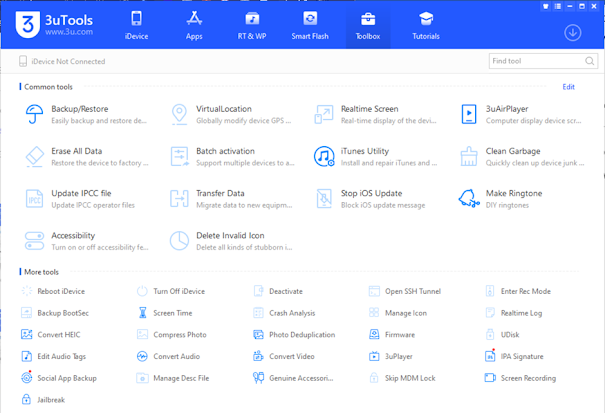Broken Access Control: Unauthorized access gateway in web application
In today's digital-first atmosphere, web applications handle everything from banking to social media. A strong access control mechanism is required with such responsibility that determines who can do what. Unfortunately, many applications suffer from Broken Access Control, an important vulnerability that enables the attackers to reach resources or perform the tasks that they should not be authorized.
This blog Broken Access Control, its risk, examples of real world, methods of exploitation, detection technique and most importantly how to stop it. If you are a developer, system administrator, or safety enthusiast, it should read a one.
🔍 What is broken access control?
Broken access control occurs when an application does not properly apply restrictions on certified users, allowing them to use unauthorized resources or functionality. This can include:
Access to administrator panels without administrator privileges.
Seeing or modifying other users' data.
To take high-considering action such as record removal.
Essentially, access control defines which data is allowed to access or modify. When this mechanism fails, attackers can bypass security rules - sometimes without the need to log in.
🧠 Why does this happen
Many reasons contribute to broken access control weaknesses:
- Security applies by assuming the frontnd: Relying on UI elements to hide restricted options.
- Roll-based check missing: not to confirm the roles or permissions of the user before giving access.
- Improper URL verification: Allows users to manipulate the paths like /administrator /editing? ID = 123.
- Using unsafe direct object reference (Idor): To highlight the internal object ID in the URL without access checks.
- Misconfigured Framework: Default settings that do not apply strict access policies.
🧪 General type broken access control attack
1. Vertical privilege
Users gain access to privileged features for administrators.
Example:
A user access:
https://bank.com/admin/deleteuser?id=457
And despite not being a administrator, another user successfully removes.
2. Horizontal privilege
Users achieve access to colleague-level data or tasks made for them.
Example:
User an access:
https://ekcommerce.com/order/View?id=102
And the user looks at B's order because there was no authority investigation.
3. Unsecured direct object reference (idor)
The app uses the approximate ID in the URL, if the user must reach them, without verifying it.
Example:
Herfer to this URL:
https://healthportal.com/PATANT/RECORD/1234
Other patients like 1235, 1236, etc. to reach records
4. Force browsing
Users navigate directly on hidden or unlinkled pages.
Example:
Get an attacker type /administrator /settings and benefits in the browser.
5. Parameter tampering
Users manipulate requests to increase privileges.
Example:
Changing userrole = guest in userrole = administrator in backnd request payload.
🚨 Study of real world case
🔸 Snapchat (2014)
An ideer vulnerability exposed the phone number of 4.6 million users. The attackers modified the user_id parameters and access individual data.
🔸 github (2020)
A researcher found a defect, which allowed unauthorized users to access internal project data through unfair permission checks in APIs.
🔸 Facebook (2015)
Security researcher Laxman Muthiah received a vulnerability, where an attacker can reset any user password using a cruel-force on the confirmation code.
🧰 detection technique
1. Manual test
- Try to reach the banned URL.
- Manipulate IDs and roles.
- Get tampering/parameter with the post.
2. Automated equipment
- Burp suite
- Ousp jap
- Postman for API Fazing
- Authmatrix Extension in Burp for Privilege Testing
3. Code review
check for:
- Missing isadmin () or roll check.
- Unprotected route or API.
- Closing points exposed with sensitive functions.
✅ How to stop broken access control
🔐 1. Apply server-side access control
Never rely on client-side logic (eg button hiding) to implement security.
🧩 2. Apply Role-based access control (RBAC)
Provide access to the roles and systematically allow those roles.
🧾 3. Definge by default
All access should be denied until clearly allowing permission.
🧱 4. Use indirect commodity reference
Instead of highlighting the direct database ID, use hacedes or random identifiers.
📋 5. Audit Log and Alert
Track access to sensitive routes and flag the abnormal behavior.
🔐 6. Range risk of closing points
Just highlight whatever is necessary. Use access tokens or sessions tokens for verification.
📜 7. Safe API Gateway
Use API Gateway to apply centralized access policies and authentication.
🧪 8. Penetration test
Regular painting may help identify access control falls before attackers
💡 Best practice for developers
- Use framework that support access control out of the box.
- Create middleware or decorators to validate roles and permissions.
- Update regular dependence and outline.
- Conduct regular security training.
💥 Broken access control business effect
The implications of a broken access control defect can be destructive:
- Data violations: unauthorized access to customer or internal data.
- Financial loss: fraud transaction or data manipulation.
- Reputation damage: loss of trust between users.
- Legal Penal Penal: Violation of GDPR, Hipaa and other rules.
📌 SEO keywords used
- Broken access control vulnerability
- Access control in web applications
- Horizontal privilege
- Vertical privilege
- Idor attack
- Role-based access control (RBAC)
- Web Safety Best Practice
- Web application penetration test
- unauthorized access
- Access control example
These keywords improve your blog's SEO rankings, especially for readers interested in web security, moral hacking and OWASP top 10 weaknesses.
🔚 conclusion
Broken Access Control is one of the most important and often exploited weaknesses in modern web applications. As the attackers are more sophisticated, any unseen route, parameter, or roll check can be a tick time bomb.
Each developer, examiner and security analyst should treat access controls as first class citizens in the design and development process.
Always test, never trust - and build safety in your application from first day.






Comments
Post a Comment